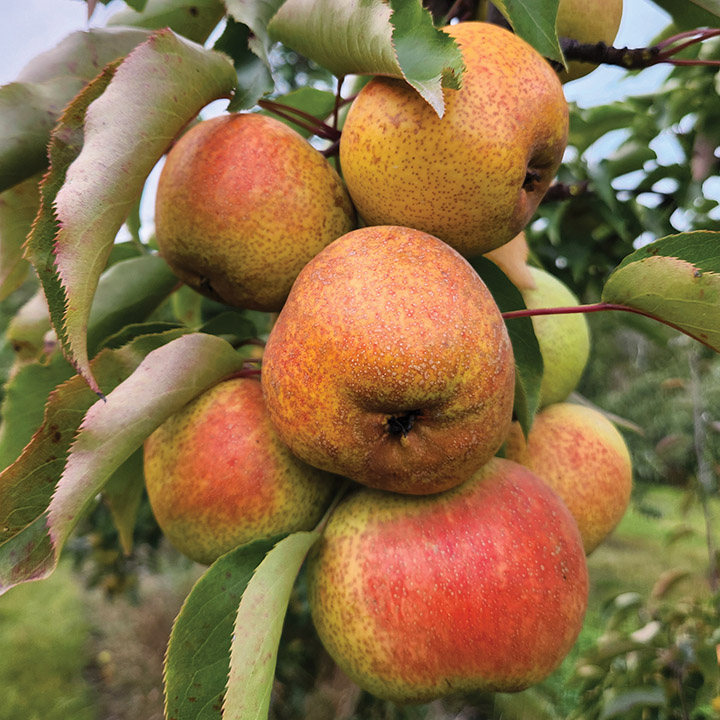Asian Pear : MISHIRASU Large Semi-Dwarf (OHxF97) (Orchard Grade)
$37.95
An 'orchard grade' is a tree that may be somewhat shorter, slightly crooked, or a bit scratched, or for some other reason is not a perfect front lawn specimen. These trees will work just as well in an orchard as a first or number one would, since they still produce the very same fruit.
Mishirasu would be the sumo wrestler of the pear world - a Bartlett so bulked up that it’s shape is barely recognizable. Fruit weighing over a pound is not unheard of. But it is what’s inside that matters, and beneath it’s massive, rather intimidating exterior lies a delicately sweet interior. Ridiculously juicy with a satisfying crunch, Mishirasu won us over, not by might, but by gentle persuasion. This pear is a keeper - it stores all winter.
NEEDS A POLLENIZER | ZONE 4/5 | HARVEST: EARLY OCT.
Only logged in customers who have purchased this product may leave a review.
Growing Tips
Asian Pears are very precocious which means they tend to produce quite heavily when only a few years old. This can result in a weakened tree as all its energy is going into producing fruit instead of forming a sturdy tree. For this reason we recommend removing most of the fruit for the first several years.
All European (regular) and Asian pears will pollinate each other providing their bloom times overlap. Generally you can go by the expected harvest time, meaning only the very early and the very late might not be compatible with each other. However, since Asian pears, on average, bloom earlier than Europeans, you might pair an early European with a mid or late Asian.





Reviews
There are no reviews yet.